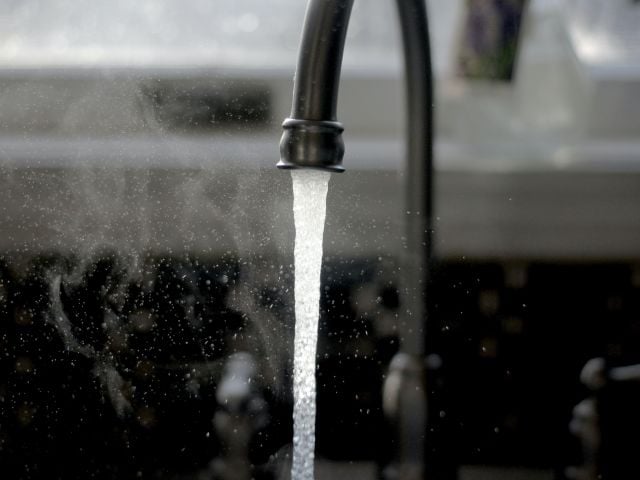SACRAMENTO – On Thursday, the California state legislature formally proclaimed October 2022 Children’s Environmental Health Month. The proclamation is intended to raise awareness about the importance of protecting children through cleaner air and water, safer food and healthier products.
“The intersection between environmental justice and the health and well-being of our children has never been more important for us to highlight,” said state Assembly Majority Leader Eloise Reyes (D-San Bernardino). “I am proud to author this resolution making Children Environmental Health Month a focus of Californians as we address pollutants in our environment and ensure clean water and clean air for all of California’s children.”
House Resolution 123 is sponsored by the Environmental Working Group, Children NOW and Families Advocating for Chemicals and Toxics Safety.
“Babies and kids in California are especially vulnerable to the environmental contaminants they’re exposed to every day,” said Susan Little, a senior advocate for California government affairs at EWG. “We know that toxic chemical exposures affect the well-being of our children. This official designation will call attention to the need to protect all children from pollution.”
There are numerous toxic chemicals that threaten the health of California’s kids. This resolution will shine a light on them, spotlighting lawmakers’ and policymakers’ efforts to address them. Exposure to pesticides, lead and other heavy metals pose some of the more serious hazards to children’s health.
“California children are exposed to unhealthy air, pesticides, lead and other heavy metals that threaten their well-being and healthy development,” said Ted Lempert, president of Children Now, a statewide children’s advocacy organization. “H.R. 123 will raise awareness among policymakers and spur them to take critical action, like eliminating toxic pesticides and cancer-causing weedkillers that will ultimately improve our children’s health and their environment.”
Pesticide exposure
In June, the Centers for Disease Control and Prevention found about 87 percent of 650 children tested had detectable levels of the ubiquitous and toxic herbicide glyphosate in their urine. According to the CDC researchers, food is the main route of exposure to glyphosate for children age 18 and under.
Glyphosate is the active ingredient in Bayer’s Roundup, the weedkiller most widely used by conventional agriculture around the world.
In 2018, laboratory tests commissioned by EWG found popular oat cereals, oatmeal, granola and snack bars came with a hefty dose of glyphosate. In some of the samples of oat-based breakfast cereals marketed to children, tests found glyphosate exceeded the amount of vitamins A, D and B12 combined.
Glyphosate has been linked to cancer by California state scientists and the World Health Organization.
Heavy metals in food
Babies are exposed to toxic heavy metals in baby and toddler food. Because of their smaller body sizes and metabolism, babies, infants and young children are more vulnerable to the harmful effects of these metals. Earlier this year, the Food and Drug Administration released a plan to draft limits for some of those toxic metals, like arsenic, cadmium, mercury and lead.
Under that proposal, draft levels for lead in baby food would be set sometime this year. Draft levels for arsenic would be set sometime before 2024, and for cadmium and mercury, in 2024 or later.
The FDA and the World Health Organization say even low levels of exposure to heavy metals such as arsenic and lead can cause serious and often irreversible damage to babies’ brains.
“California's children are regularly exposed to toxic chemicals in food, as well as in our air, in water, in clothing, and in cleaning and personal care products,” said Lendri Purcell, president of FACTS – Families Advocating for Chemical and Toxics Safety and vice president of Jonas Philanthropies, a long-time supporter of EWG’s children’s health initiative.
“These exposures put them at risk for immediate and long-term health issues. Protecting our children now from needless toxic contaminants at home, at school and out in the community is imperative to ensure they have long, healthy, happy and successful lives,” Purcell added.
Lead exposure
In 2019, California’s state auditor found more than 1.4 million children covered by Medi-Cal, California’s Medicaid healthcare program, had not received proper lead tests and that the state’s Department of Public Health was neglecting the prevention of lead poisoning.
That number is suspected to have been much higher during the Covid-19 pandemic.
All children with Medi-Cal are required to have their lead levels checked at their 1-year-old and 2-year-old checkups.
“All children can be exposed to lead in drinking water and old paint, but kids from lower-income families are considered most at risk of lead poisoning,” said Little. “In the wealthiest nation on earth, none of our infants and children should be exposed to a dangerous heavy metal that causes brain damage.”
“Our littlest children are highly susceptible to lead’s damaging effects and absorb as much as 50 percent of the lead they take in through drinking water,” she added.
Children are exposed to hazardous chemicals in outdoor and indoor environments, which puts them at a greater risk of disease when they are adults. A wide range of environmental hazards exists in schools and at home: lead in drinking water and old paint, chemicals in cleaners and pesticides in food, wireless radiation and other sources of contamination.
The proclamation reads, in part:
From birth through young adulthood, children experience rapid physiological growth, and their systems absorb more toxins in proportion to their body weight than do adults’ systems. Children also have higher metabolic rates than do adults, and relative to body size, children eat and drink more food and liquid than their full-grown counterparts. Children also have unique behavior and activity patterns. They live and play much closer to the ground than do adults, and are therefore exposed differently to toxins.
EWG has long been at the forefront of the fight against threats to children’s health, empowering parents with information about how to avoid toxic exposures in everyday environments. Find more information about EWG’s work on children’s environmental health here.
###
The Environmental Working Group is a nonprofit, non-partisan organization that empowers people to live healthier lives in a healthier environment. Through research, advocacy and unique education tools, EWG drives consumer choice and civic action.
Children Now is a non-partisan, whole-child research, policy development and advocacy organization dedicated to promoting children’s health, education and well-being in California. The organization also leads The Children’s Movement of California, a network of over 4,800 direct service, parent, youth, civil rights, faith-based and community groups dedicated to improving children’s well-being. https://www.childrennow.org/
Families Advocating for Chemical & Toxics Safety was founded in 2017 by two North San Francisco Bay Area mothers who want to help connect families locally, regionally and across the country who are trying to keep their children safe from the ubiquitous toxic exposures in our modern world. https://www.factstoaction.org/



